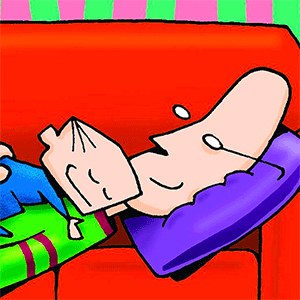My Pet World: Teaching a dog-reactive dog not to react to other dogs
Dear Cathy,
My daughter recently bought a 3-year-old French Bulldog from a breeder who did not provide all the information about the dog. Our main concern is the dog is not friendly to other dogs and starts to bark and appears to want to attack the other dogs. Is there any way of training our dog out of this habit?
Another concern is the dog doesn't appear to know its name (Millie) and doesn't appear to react to noise. We think the dog may be deaf. My daughter's vet said it is hard to test a dog for hearing. Just wondering if you had any thoughts on this problem.
Lastly, the dog is stubborn and just wondering if this is a natural trait of French Bulldogs or just Millie? -- Stephen, Valley Stream, NY
Dear Stephen,
I view dogs as individuals and not by their breeds, so let's go with it is "just Millie," when it comes to personality traits. Just in case her "stubbornness," however, is related to hearing loss, begin training her with hand signals. You can make up your own hand signals for each command, and then pair them with verbal commands, in case she can still hear. If she can't hear, hand signals will make learning go quicker.
If Millie is not friendly to other dogs, it's likely she was not well socialized as a puppy with other good-natured dogs who could have helped her learn appropriate social cues. Because there are many dogs like this now, some communities have "Growl" classes for dog-aggressive dogs. These classes retrain your dog by exposing them to other dogs and rewarding them for good behavior.
If you can't find any classes like this in your area, basic obedience classes can help too. The more a dog learns to respond to a "sit-stay" command, for example, the more likely she will "sit-stay" on command when a dog is walking by you on the street.
Street passes are an important place for Millie to learn nonreactive behavior. During dog walks, give her high value treats whenever another dog passes, keeping her on the opposite side of the street as the passing dog. These treats teach her that when other dogs are present good things happen. Repeating this practice every day will help Millie learn that dogs passing by are not to be feared but welcomed.
Dear Cathy,
Evelyn in Las Vegas had a question about training her two dogs. We have a similar problem with our Australian Cattle dog, who is almost 2 years old. She rings the bell at the door about half the time but doesn't "go" outside consistently. My carpets are a mess. She is a good dog otherwise, intelligent and sweet. I must have missed your earlier column and wonder if you could repeat what you told Evelyn that brought her such success. -- Susan, Wadsworth, IL
Dear Susan,
I offered some training techniques on re-housetraining a dog that included teaching a dog how to "go potty" on command. Because of the number of letters from readers requesting the same information, I am more than happy to give these instructions again.
Whenever a dog begins soiling in the house, you have to treat the dog like a puppy and begin housetraining all over again. That means you must take your dog outside to relieve himself whenever you come home and immediately after the dog wakes up, finishes eating, and stops playing. Because dogs are creatures of habit, you should also know approximately when and where your dog is having accidents in the house and anticipate this by taking the dog outside 20 minutes prior to the offense.
To teach a dog to "go potty" on command, watch your dog's body language outside. As soon as she gets into position to relieve herself, say "go potty" and then follow that with a reward word, like "Bingo," and a treat, so she knows you approve of the behavior. If you are outside for longer than 15 minutes, repeat the routine again before taking your dog back into the house.
All dogs can be distracted by the sights and sounds outside. That's why some dogs pee as soon as they come into the house. Once you teach your dog to "go potty" on command, you can ask them to do it a few times before they re-enter the house to make sure there won't be any accidents.
Your dog should understand "go potty" as they do commands, like "sit" and "stay." Hope this helps.
========
(Cathy M. Rosenthal is a longtime animal advocate, author, columnist and pet expert who has more than 25 years in the animal welfare field. Send your pet questions, stories and tips to cathy@petpundit.com. Please include your name, city, and state. You can follow her @cathymrosenthal.)
(c) 2019 DISTRIBUTED BY TRIBUNE MEDIA SERVICES, INC.






